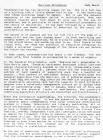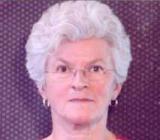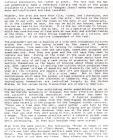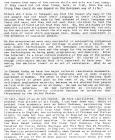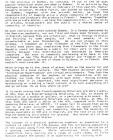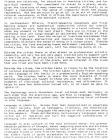1
Judy Gouin, the eldest of two children, was born in 1947 in Franborough, Hampshire, England to Canadian parents abroad, as Judith Mary Gouin. She was raised in Ottawa and Kingston, Ontario.From 1960 to 1963, she studied drawing in adult evening classes at Queen's University in Kingston with Ralph Allen, and studied painting, drawing and sculpture in summer school for teenagers at Queen's University with Ralph Allen and David Partridge.
Judy moved to London, England in 1963, where she attended the Chelsea School of Art from 1965 to 1969. She earned a National Diploma in Art & Design (Bachelor of Fine Arts), majoring in painting.
In 1969, she moved to Toronto, Ontario, where she produced work and taught evening classes in screen printing at Open Studio, an artist-run printmaking centre, from 1971 to 1983. She was a founding board member of the Toronto Photographers' Workshop, serving a two-year term from 1981 to 1983, as well as serving on the informal board elected by the group to seek incorporation. From 1979 to 1981, she was the spokesperson (president) of CARO (Canadian Artists Representation Ontario), now CARFAC Ontario (Canadian Artists' Representation/ Front des artistes canadiens). She worked as Film, Photography & Video Officer at the Ontario Arts Council form 1983 to 1988.
She moved to Temagami, Ontario, in 1991, where she currently resides. Local projects have included chairing a one-year pilot project for a municipal art gallery in 1993; producing an audio-visual project, "A Different World: The Temagami Forest, 1895-1935" on contract to the Temagami Historical Society and Teme-Augama Anishnabai in 1993; producing a slide/lecture series, "From Ancient Egypt to Modern Art: How We Got Here and Why" in both English and French, commissioned by the Temiskaming Art Gallery in Haileybury in 1997; and co-chairing the third "Visions of the North, Voices of the North" conference with Professor Anthony Blackbourn at Nipissing University in 1999.
Solo exhibitions of her work have been held at: Joan Ferneyhough Gallery, North Bay, Ontario (2004, 2001, 1999), Temagami Welcome Centre, Temagami, Ontario (1992), Art Gallery of Ontario Artists With Their Work Program (1985, Temiskaming Art Gallery, Haileybury; The Station Gallery, Whitby, Ontario, 1984; and Thunder Bay National Exhibition Centre, Ontario 1983); Mira Godard Gallery, Toronto, Ontario and Calgary, Alberta (1982 and 1979); Brian Melnychenko Gallery, Winnipeg, Manitoba (1980); Marlborough Godard Gallery, Toronto, Ontario and Montreal, Quebec (1976), and Agnes Etherington Centre, Kingston, Ontario (1974).
She has received the following grants: Canada Council Explorations Program Grant (with Nellie Ashawasega) (1990); Canada Council Short Term Grant (1980); Ontario Arts Council Grant (Visual Arts, 1978), Canada Council Arts Grant 'B' (1973), Ontario Arts Council Grant (Photography, 1973), Canada Council Short Term Grant (1970).
She was represented by Mira Godard Gallery in Toronto, Ontario and Calgary, Alberta from 1974 to 1989, and she has been represented by Joan Ferneyhough Gallery in North Bay, Ontario since 1998.
(The biographical information featured here was written in consultation with the artist in 2006.)
Interview:
Judy Gouin's first memory of being interested in art was creating a shoebox theatre at age eight. It was "most exciting" she says, to change the lighting by using different colours of tissue paper.
At age 13, her family moved to Kingston, where she took art classes in community centres and at Queen's University. Ralph Allen, her instructor at Queen's, told her, "You really belong in the adult class." Through being his student, she began to pick up on how he thought, and when she would look at the abstract works in the gallery below where the classes were held, she began to feel like she belonged in the arts.
As a child, she spent summers in northern and northwestern Ontario and Gatineau, Quebec. "I just lived from one summer to the next," she says. She felt that there was a distinction between the people who visited these places and the people who lived there, and she imagined that it would be a great privilege to live in such a "magical environment".
Although Judy "chose big city life" while attending art school and working for the Ontario Arts Council, she knew she would return to nature. She was familiar with Temagami through an Ojibway friend in the French River area. Judy says she loves that the community encompasses the native and Francophone communities, and that it is still accessible to larger city centres. "Coming to Temagami has been part of a conscious series of decisions about making a certain kind of work," she says.
Judy formerly concentrated on printmaking but found that there were limitations to expressing herself with the medium, and she knew if she moved to a more remote area, she would have limited access to the necessary resources for printmaking. She also disliked having to place a print under glass because it hid the texture. Painting, however, had always seemed "impossible to control." She says, "I never got along with painting" and although it was her focus in school, she never imagined herself returning to it.
Since 1992, however, her focus has been on painting. The change, she says, is not a matter of preference for a medium, but more a realization about what makes the production of certain works possible. "It's a question of what medium is going to allow me to achieve the things I want in making art," she explains.
When asked to describe her creative process, Judy says, "I'm always...seeing things that are striking." She contemplates them and draws or photographs the source of inspiration as reference. "My note taking is visual," she says. She says she often thinks about it for quite a while before it becomes a painting. She will make a small-scale study, where she feels liberated to rub paint off, overpaint, and be experimental. In the study, she "works out a lot aesthetically and technically" aiming to "resolve as much as possible." Then she begins the larger version using a grid.
Over time, her work has changed to become "much more solid" in capturing what she aims for. She says she didn't fully understand earlier what she wanted to do, but that she feels closer now to realizing that vision. "I've been able, I think, with some maturity and confidence, to work with the complexity of painting." Thematically, she is exploring the concerns and interests "deeper and deeper" that inspired her to create art in the first place, effectively bringing her full circle.
(By Heather Saunders, based on a phone interview in December, 2006).
3
Judy Gouin, Presentation notes (Voices of the North, Visions of the North conference, Nipissing U.)1995
